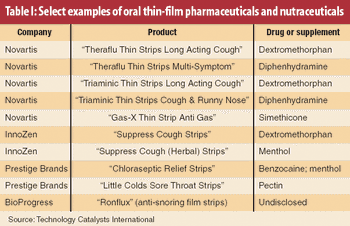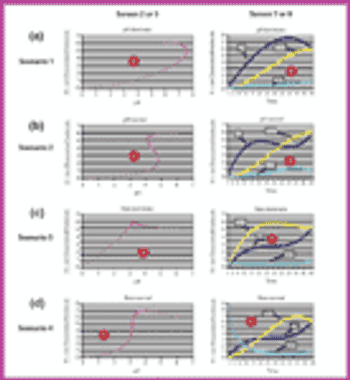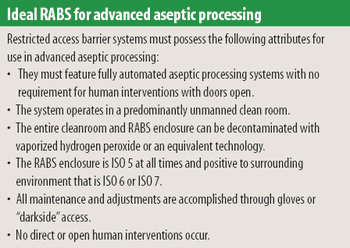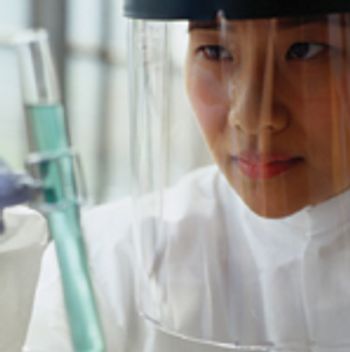
Roxane Laboratories (Columbus, OH), a Boehringer Ingelheim company, is conducting a voluntary recall in the United States and Puerto Rico of a single manufacturing lot of "Azathioprine"tablets, USP 50 mg.

Roxane Laboratories (Columbus, OH), a Boehringer Ingelheim company, is conducting a voluntary recall in the United States and Puerto Rico of a single manufacturing lot of "Azathioprine"tablets, USP 50 mg.

Novartis (Basel, Switzerland) will build a cell culture-derived influenza vaccines manufacturing plant in Holly Springs, North Carolina. Construction is expected to begin in 2007.

In a move to strengthen its position in Western generic drug markets, Ranbaxy Laboratories Ltd. (Gurgaon, Haryana, India) acquired the Mundogen generic drug business of GlaxoSmithKline (GSK, London, England) in Spain, through Ranbaxy's Spanish subsidiary, Laboratorios Ranbaxy S.L.

Although the number of anti-infective vaccines (as distinct from therapeutic vaccines for cancers and other noninfectious diseases) entering clinical study each year since 2000 has been higher on average than it was in the 1990s, this product area may see little additional growth through the rest of this decade, according to a recentanalysis from the Tufts Center for the Study of Drug Development (Boston, MA).

Dutch biotechnology company Crucell NV (Leiden, Netherlands) and its technology partner DSM Biologics BV, a business unit of Royal DSM NV (Heerlen, Netherlands) will open a new research and development center that will specialize on further developing the "PER.C6" human cell line for the expression of recombinant pharmaceutical proteins.

Does the competition from authorized generics really help lower drug prices and boost healthcare savings?

MedImmune, Inc. (Gaitherburg, MD) reports that US Food and Drug Administration (Rockville, MD) has approved the company's supplemental biologics license application to use reverse genetics technology to construct new vaccine strains to produce seasonal influenza vaccines.

Biopharmaceutical company Lipoxen PLC (London, UK) has developed a Hepatitis E vaccine using its novel vaccine delivery technology "ImuXen," which the company claims to be easy to manufacture. According to the company, the proprietary liposomal formulation method delivers vaccine materials to the immune system in a manner designed to emulate the response of a natural encounter with the infection agent.

This article summarizes changes to the Akers–Agalloco aseptic processing risk analysis model (first presented in Pharmaceutical Technology's November 2005 issue) as well as some of the underlying thinking behind the revision. The simplified model makes the method easier to use because of its greater flexibility of environmental control practice. It maintains the emphasis on human activity as the primary consideration in risk management for aseptic processing.

Last week, the Generic Pharmaceutical Association (GPhA Arlington, VA) praised a proposal by the Senate Agricultural Appropriations Subcommittee that, if approved, would provide $10 million in additional funding for the US Food and Drug Administration?s (Rockville, MD) Office of Generic Drugs.

The US Food and Drug Administration (Rockville, MD) approved the first generic versions of "Zocor" (simvastatin), the anticholesterol drug by Merck & Co., Inc. (Whitehouse Station, NJ).

Pfizer, Inc. (New York, NY) reports the United Kingdom's Court of Appeal has upheld the exclusivity of the main patent covering atorvastatin, the active ingredient in "Lipitor."

Drug development opportunities, specification development, and new vaccine technologies were highlighted at the AAPS National Biotechnolgy Conference in Boston this week. More than 1100 attendees from 19 countries participated in the event.

GlaxoSmithKline PLC (GSK, London, UK) will invest more than GBP102 million ($188 million) over the next four years in a vaccine manufacturing plant in Singapore.

This week?s PharmTech Annual Event (www.pharmtechevent.com) in Somerset, New Jersey, targeted approaches to improving drug development and quality through optimizing processes, managing risk, and controlling variations in manufacturing operations.

Predictable outcomes lead to greater manufacturing efficiency and speed time to value.

The biggest single recent trend in outsourcing solid-dosage processing has been the movement toward discovery and synthesis of more potent active pharmaceutical ingredients.

The US Department of Health and Human Services (HHS, Washington, DC) will distribute more than $1 billion in contracts to accelerate the development of cell-based production technologies for influenza vaccines.

Bringing Exubera to market requires extensive collaboration by Pfizer, Nektar Therapeutics, West Pharmaceutical Services Tech Group, and Bespak.

Using Bezier curves, an experimental process controller has been developed for biosynthesis applications in which the inactivity of a pH-sensitive enzyme must be decreased. By taking into account various control scenarios of pH and growth rate, as well as the physical and chemical characteristics of the environment, a suitable human-machine interface can be developed.

Any aseptic processing technology that allows intervention by gowned personnel during operation cannot be considered an advanced technology. Although a standardized definition of restricted access barrier systems has been developed, these systems fall well short of being classfied as advanced technologies.

The industry has acknowledged only recently the significance of the contamination risk posed by humans. The authors assert that this realization, together with technological advances, will lead to the elimination of human intervention and, hence, improved sterility.

There are few, if any, valid reasons not to install an isolator in a new aseptic processing facility.

Bang & Olufsen Medicom (Copenhagen, Denmark, www.medicom.bang-olufsen.com), a drug-delivery device solutions provider, and Bespak (Milton Keynes, UK, www.bespak.com), a medical-devices and inhalation-valve technologies company, established an exclusive partnership to codevelop and comarket the ?Assist Actuated Inhaler,? a single-increment, dose-counting inhaler. The integrated device features an assisted firing mechanism for easier patient use, according to a company release.

Novartis (Basel, Switzerland) has closed on its $5.4-billion acquisition of Chiron Corporation (Emeryville, CA), paving the way for the creation of a new Novartis division focusing on vaccines and diagnostics.